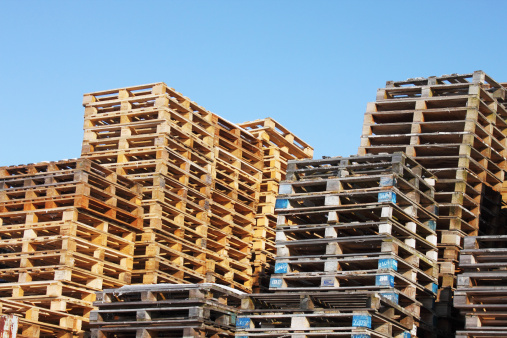Re-using pallets seems like a clear way to reduce your costs associated with shipping. Whether or not this is safe and legal depends on what is on the pallet and where it is headed. Pallets that are used to ship short distances, say between a distribution center and a store, can be reused as long as there are no restrictions on pallet reuse associated with the load they bear. Companies reusing pallets should, however, be on the look out for damaged pallets and those showing wear and tear. For companies who ship loads across borders, regulations may prevent pallets from being re-used. Government agencies across the globe require that pallets be certified before being accepted through customs. Once a pallet crosses the border, it must pass through the process again to be re-certified for another trip.
Regulations Protect Against the Spread of Invasive Species
For over a century, North America has suffered from the havoc wreaked by invasive plant species on our trees. Three pathogens, in particular, have caused true devastation.
- The American chestnut was almost completely wiped out by a fungus, Cryphonectria parasitica, that arrived on imported Japanese chestnuts.
- Dutch elm disease, which has infected elm populations across North American and Europe, is caused by sac fungi, spread by the elm bark beetle.
- The emerald ash borer is an insect introduced from Asia that has spread into 20 states and 2 Canadian provinces, killing tens of millions of ash trees. These states are under quarantine to prevent the spread of the insect.
From the devastating consequences of foreign microscopic hitchhikers, came the International Standard for Phytosanitary Measures, publication number 15, or simply ISPM-15. Any pallet that is shipped across international borders must be ISPM-15 certified. ISPM-15 certification requires pallets to be heat-treated or fumigated with methyl bromide to ensure that all microscopic organisms are killed before the pallets are exported. Once treated, the pallet is stamped to indicate compliance. Without that stamp, a pallet will not be allowed into a country. If that pallet is destined to make a return trip, it must go through the process again; the first stamp is stripped and the pallet is re-treated and stamped again.
Sadly, despite the terrible consequences, there is still some cheating that occurs. Together with the Animal and Plant Health Inspection Service (APHIS), reputable pallet manufacturers work hard to prevent uncertified pallets from crossing borders.
Re-Use of Pallets is Dependent on What They Carry and Where They Are Going
Whether or not a pallet can be reused is entirely dependent on the load it carries and where it is headed. Pallets that do not cross restrict borders and that do not carry loads that come with restrictions, can be reused to the extent that they remain structurally sound. In other words, as long as they are in good shape, they can be reused. If pallets carry toxic or regulated goods, however, they may not be sanctioned for multiple uses. In addition, pallets that cross international borders must be re-certified according to ISPM-15 requirements before being reused for international shipping.
